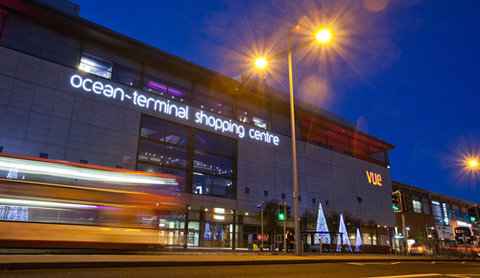For investors, the choice is between traditional retail and the burgeoning logistics sector.

Although servicing similar shopping needs in many respects, in real estate terms they appear quite different: traditional ‘bricks and mortar’ shops in buildings, versus large distribution centres and other logistics infrastructure that support online purchasing. In reality these sectors are co-dependent: the logistics sector also underpins the physical retail sector, from farm-to-fork distribution, to the ever growing hybrid market of retailers who offer both a traditional retail experience, and an enhanced online service, supporting ‘click-and-collect’ facilities.
The retail sector as a whole contributed a whopping 11% towards the UK’s economic output in 2017, and employed over 4.5 million people, making it the largest industrial sector in Britain. But daily headlines of retail woes would seem to signal that the days of the traditional retail model are numbered, and the increase in online shopping makes investing in the logistics sector an obvious choice.
Yet while it’s safe to predict online sales will continue to increase their share of the market, traditional shopping remains an attractive, albeit evolving option for the consumer.
Footfall statistics show those shopping in person prefer to do so in retail/leisure parks rather than on the high street. In the first half of 2017, more retail and leisure units opened in the UK than closed, most in mixed-use retail parks. ‘Experiential’ shopping still matters to the consumer. Online is fine for washing powder or a pint of milk, but we want to see the prime ribeye steaks before we buy them.

Where traditional retailers face a particular challenge is in rising to the changing demands of consumers in relation to the live retail experience. Destination shopping is clearly attractive, and retail/leisure parks in particular have the advantage of supplying a mix of shopping and leisure experiences in one trip, although even those parks have been suffering from the effects of recent retailer collapses, and this is being keenly felt in retail-only estates.
The traditional retail model needs to do more to adapt to the growing sophistication and selectiveness of the average shopper. The lesson from the recent demise of Toys R Us is clear – retailers need to adapt to the changing preferences of the shopper in imaginative ways. Sticking to the original formula – no matter how successful it was to begin with – is not good enough anymore.
Maintaining loyalty
Nor is it simply a matter of moving some of your business into the online environment. As the experience of retailers such as Marks & Spencer and Debenhams has shown, often all this does is move the same customers from stores to online, but with the significant additional cost of maintaining two shopping channels instead of one.
To maintain shopper loyalty and confidence, online needs to be swift, slick, and effective: retailers need to make a considerable investment in this outlet and cannot simply rely on customers transferring from one format to another.
Imaginative alternative uses are starting to emerge – in legacy large supermarket space, for example, a variety of shopping options are becoming available, from Argos sections within larger Sainsbury’s stores, to the integration, following the Tesco takeover of Booker, of stores combining wholesale cash and carry sections with retail offerings. In Ocean Terminal, Edinburgh, the former BHS store has been turned into a roller rink and indoor skate park; Selfridges recently trialled a boxing gym in its London store; and other retailers have announced initiatives to enhance the customer experience, ranging from the establishment of yoga studios to champagne bars.
The failure of many retailers is due in part to the inability to think differently. But stronger partnerships are also needed between landlords and their occupiers, communities and their high street occupants, and local authorities and their ratepayers, with a view to actively promoting, encouraging and facilitating the enhancement of customer experience in innovative, yet cost-effective ways.
In a rapidly changing retail environment, one constant should provide some comfort – we will always need to shop.

































No comments yet